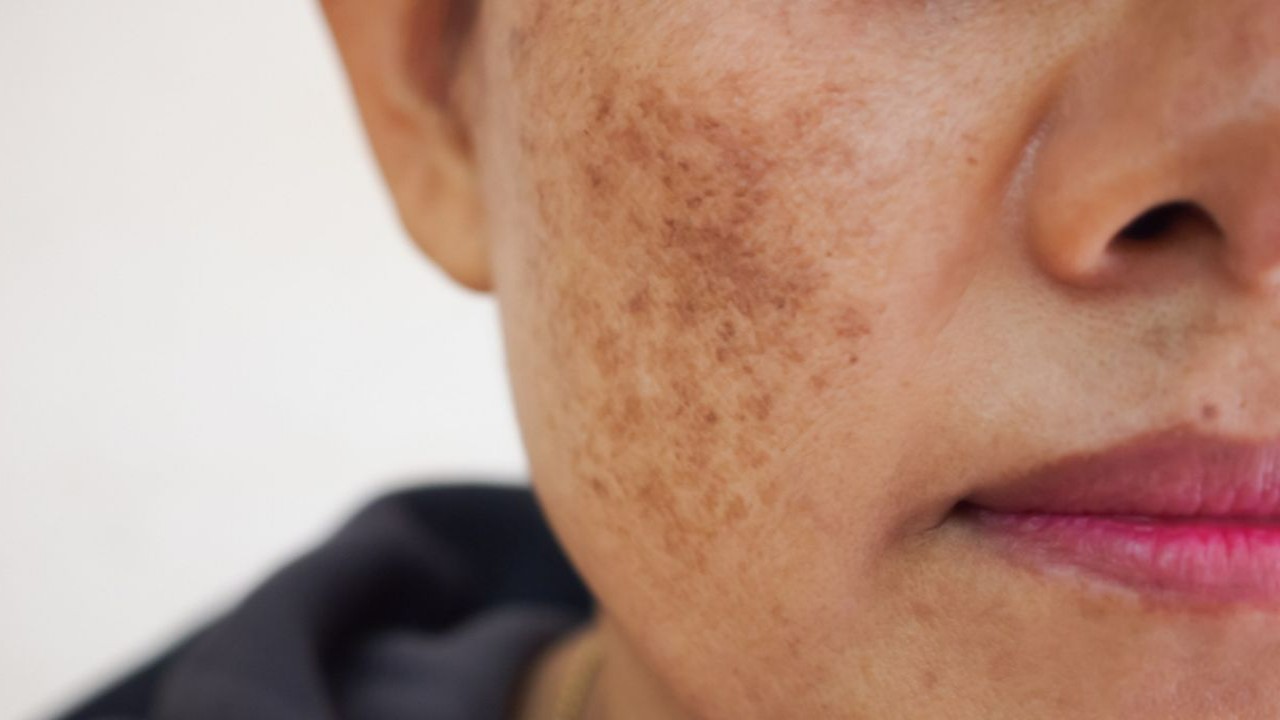Melasma: A Pervasive Challenge in India's Dermatological Landscape
Melasma, a common skin concern, requires a long-term treatment plan. From various causes to ways to treatment methods — know all about this skin condition here

In the kaleidoscope of dermatological challenges, one condition that casts a shadow, particularly in the sun-soaked landscapes of India, is melasma. The intricate interplay of sun exposure and skin pigmentation unveils a complex tapestry of concerns. For starters, wondering what melasma is, let me tell you that it is a skin condition characterized by hyperpigmented patches, casting a shadow over the lives of millions, particularly in India. This common disorder, predominantly affecting women, manifests as irregular, symmetrical patches of brown or gray discoloration, typically gracing the face.
While the exact causes of melasma remain shrouded in enigma, a complex interplay of factors, including sun exposure, hormonal influences, and genetic predisposition, is believed to orchestrate its development. Melasma, often referred to as the “mask of pregnancy,” transcends its hormonal association to become a prevalent concern for both men and women.
Melasma- A Rapidly Growing Skin Disorder in India
Melasma's prevalence varies across the globe, with a higher incidence observed in individuals of darker skin tones. In India, the prevalence of melasma is estimated to range from 9.3% to 42%, placing it among the most prevalent skin disorders in the country. The societal significance of clear, flawless skin in India amplifies the psychological toll of this condition, often leading to a quest for effective treatment modalities.
Beyond its physical manifestations, melasma casts a metaphorical shadow on the quality of life of affected individuals. The visible nature of the condition can lead to diminished self-esteem, anxiety, and even depression. Societal pressures and beauty standards exacerbate these psychological impacts, making it imperative to address melasma not only from a medical standpoint but also from a holistic perspective.
- Sun Exposure- The Culprit Unmasked
As per Dr. Manan Mehta, a renowned dermatologist and the visiting consultant of Medata's Dermatology department, “Sun exposure stands as the primary culprit in melasma's genesis. Ultraviolet (UV) radiation, particularly UVA and UVB rays, triggers an overproduction of melanin, the pigment responsible for skin color. In individuals with melasma, this process becomes dysregulated, leading to the uneven distribution of melanin and the appearance of dark patches.”
The cause is unknown but sunlight and hormones (oral contraceptives and pregnancy) are implicated. Melasma is most common in Asian and Latin women of reproductive age with certain skin types. Melasma can affect emotional well-being, self-esteem, and overall quality of life.
- Hormonal Fluctuations- Adding Fuel to the Fire
Hormonal fluctuations play a significant role in Melasma's pathogenesis. Pregnancy, childbirth, and the use of oral contraceptives can trigger melasma or worsen existing cases. This hormonal connection is attributed to the influence of estrogen and progesterone on melanocyte activity.
- Genetic Predisposition- An Unseen Force
Genetic predisposition also contributes to melasma's susceptibility. Studies have identified certain genetic polymorphisms associated with an increased risk of developing melasma.
Clinical Manifestations- A Spectrum of Appearances
It is paramount for the people hitting the World Wide Web (WWW) and searching the term 'Melasma' to know that the skin disorder largely is present in three distinct clinical patterns, they are:-
1. Centrofacial Melasma- Centrofacial melasma manifests as symmetrical patches on the forehead, cheeks, and upper lip, resembling a butterfly-like distribution. This pattern is intricately linked to the dysregulation of melanin distribution, often exacerbated by factors such as sun exposure, hormonal influences, and genetic predisposition.
2. Malar Melasma- In the case of Malar melasma, the predominant impact is on the cheeks, with patches extending to the nose. This distribution underscores the complex interplay of melanin production and hormonal fluctuations, making targeted treatment crucial for effective management.
3. Mandibular Melasma- Characterized by patches along the jawline, Mandibular melasma further exemplifies the diverse clinical presentations of this skin disorder. Genetic predisposition, coupled with environmental factors, contributes to the manifestation of melasma in this distinct pattern.
Treatment Strategies- Navigating the Maze
Melasma treatment poses a challenge due to its complex etiology and tendency for recurrence. Topical agents, chemical peels, and laser therapy are among the arsenal of treatments available. However, the chronic and recurrent nature of melasma poses hurdles in achieving sustained remission. Furthermore, individual responses to treatments can vary, necessitating a personalized approach to managing this condition.
However, a range of treatment options, tailored to individual needs and melasma type, can effectively manage the condition.
- Topical Treatments- Unveiling Skin's Brilliance
The people navigating the path towards the treatment should be aware and thankful of the fact that there are few treatment options available for this rapidly growing skin disorder and one of them is topical treatments which are applied directly to the affected areas. As per leading skincare specialists across the globe, Topical treatments form the mainstay of melasma therapy. Common topical agents include:-
1. Azelaic Acid: Azelaic Acid, a naturally occurring substance, emerges as a noteworthy topical agent. Renowned for its anti-inflammatory and lightening properties, it plays a pivotal role in mitigating hyperpigmentation associated with melasma. Acid positions it as a valuable component in the therapeutic arsenal against melasma.
2. Kojic Acid: Kojic Acid, a fungal metabolite, stands out for its ability to inhibit melanin production. As a key player in topical treatments, kojic acid offers a targeted approach to address melasma's dysregulated melanin synthesis characteristic. Its inclusion in treatment regimens underscores the importance of diverse mechanisms in combating this skin condition.
- Oral Medications- Addressing the Hormonal Connection
In cases where hormonal imbalances contribute to melasma, oral medications may be prescribed.
These include:-
1. IV Glutathione: IV Glutathione, known for regulating estrogen and progesterone levels, plays a pivotal role in alleviating melasma symptoms linked to hormonal imbalances. This targeted hormonal modulation addresses the underlying causes, making IV Glutathione a valuable component of comprehensive melasma treatment strategies.
2. Anti-androgen Agents: In the realm of hormonal interventions, anti-androgen agents carve a niche by blocking androgen receptors. This targeted approach proves beneficial in reducing melasma severity, particularly in patients with androgen excess. The inclusion of anti-androgen agents enriches the spectrum of oral medications, offering tailored solutions based on individual hormonal profiles.
3. Tranexamic Acid: Another oral medication option for managing melasma is Tranexamic Acid. This agent is thought to inhibit the production of melanin, providing an additional avenue in addressing hyperpigmentation associated with hormonal influences. Incorporating Tranexamic acid into the treatment plan widens the range of oral medications available for a more nuanced approach to melasma management.
- Procedural Interventions- Tackling Deep Pigmentation
For more resistant melasma, procedural interventions may be considered. Procedural interventions for melasma aim to reduce hyperpigmentation by targeting deeper layers of the skin. Here are some of the Procedural interventions you might be looking to explore:-
1. Chemical Peels: Chemical peels are a prominent procedural intervention in treating melasma. These peels involve the application of chemical solutions to the skin, promoting controlled exfoliation and regeneration. Among the various chemical peels utilized for melasma, glycolic acid peels, known for their mild yet effective nature, are frequently employed. Glycolic acid, an alpha hydroxy acid, aids in gently removing the outer layer of skin, reducing pigmentation and enhancing skin texture. Black peels, containing a combination of salicylic acid, resorcinol, and lactic acid, offer a more intensive treatment for melasma, penetrating deeper layers to address stubborn pigmentation. Additionally, retinol peels, incorporating vitamin A derivatives, contribute to skin renewal and pigment reduction. Chemical peels under procedural interventions present a versatile and targeted approach for managing melasma, tailoring treatments to individual skin needs. However, if you seek to opt for chemical peels, you must be aware that you must attend multiple sessions and sun protection is a crucial post-treatment.
2. Laser Treatments: Targeting melanin-producing cells, lasers can effectively reduce melasma pigmentation. Laser treatments for melasma involve the use of targeted beams of light to penetrate the skin and address melanin-producing cells. The primary goal is to reduce hyperpigmentation and even out skin tone. It's crucial to note that the effectiveness of laser treatments can vary based on the type of laser used, the specific characteristics of the patient's skin, and the expertise of the dermatologist. It is advised to consult with a dermatologist to determine the most suitable laser type. Laser treatments for melasma typically require multiple sessions for optimal results. Patients should be aware that achieving the desired outcome may take time, and adherence to post-treatment care is crucial.
3. PRP Treatments: Platelet-rich plasma (PRP) treatments involve using a concentrated form of your own blood to stimulate skin rejuvenation. In the context of melasma, PRP treatments can be beneficial in promoting collagen production and enhancing the overall texture of the skin. Dermatologists may recommend PRP as part of a comprehensive treatment plan for melasma.
Preventive Measures- The Road to Be Taken
While the quest for an ideal treatment continues, preventive measures assume paramount importance. One must remember that shielding your skin from the sun is pivotal in preventing and managing melasma. Opting for a broad-spectrum sunscreen with a high Sun Protection Factor (SPF) to counteract the harmful effects of UVA and UVB rays is crucial, suggests Dr. Manan Mehta. Water-resistant sunscreens are ideal, especially if outdoor activities or water exposure are part of your routine. A large number of skincare specialists across the globe also suggest that formulations that include zinc oxide or titanium dioxide are beneficial in this pursuit against melasma as these physical blockers offer effective protection.
Embracing protective clothing like wide-brimmed hats and sunglasses to provide an additional layer of defense against sun exposure can also be a way to fight the battle against melasma. Public awareness campaigns emphasizing the significance of sun protection and early intervention can contribute to reducing the prevalence of melasma in India.
The Way Forward
In unraveling the intricacies of melasma, collaboration between dermatologists, researchers, and public health initiatives becomes imperative. A multifaceted approach, encompassing medical treatments, preventive measures, and psychological support, can pave the way for a holistic management strategy. Additionally, fostering an environment where individuals feel empowered to seek help without fear of judgment is paramount.
It is a fact that people generally tend to avoid but melasma, with its intricate interplay of genetic, environmental, and psychological factors, poses a substantial challenge in the Indian landscape. By fostering awareness, promoting research, and advocating for a nuanced perspective on skin health, we can collectively work towards lifting the veil that shrouds those affected by melasma in India and around the globe.





 JOIN OUR WHATSAPP CHANNEL
JOIN OUR WHATSAPP CHANNEL























































